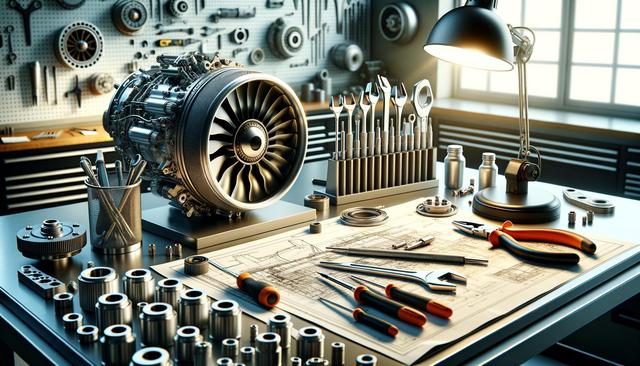The Role of Aviation Mechanics in the Industry
Aviation mechanics play an essential role in ensuring that aircraft operate safely and efficiently. These professionals are responsible for inspecting, maintaining, and repairing various aircraft components, including engines, landing gear, avionics, and structural systems. Their work is guided by stringent regulations and standards set by aviation authorities to ensure compliance and safety. As the aviation training industry continues to expand, so does the demand for highly trained mechanics who can meet the growing needs of commercial and private aviation sectors.
To enter the field, individuals typically complete aircraft maintenance training through approved aviation training programs. These programs provide a mix of classroom instruction and hands-on experience, covering topics such as aerodynamics, electrical systems, and powerplant maintenance. For those seeking aviation training jobs, obtaining certification from a recognized regulatory body is often a requirement. This certification not only validates their skills but also opens up opportunities across various sectors, from airlines to aerospace manufacturers.
Companies Supporting Aircraft Maintenance and Repair
A number of companies specialize in supporting aircraft maintenance and repair services, offering everything from routine inspections to major overhauls. These organizations play a crucial role in keeping fleets airworthy and compliant with safety regulations. Some focus exclusively on specific aircraft types or systems, while others provide comprehensive maintenance, repair, and overhaul (MRO) services. Their collaboration with aviation schools and training centers also contributes to workforce development by offering internships, apprenticeships, and on-the-job training opportunities.
Key services offered by these companies often include:
- Scheduled maintenance checks (A, B, C, and D checks)
- Engine and component overhauls
- Avionics system upgrades
- Structural repairs and modifications
In addition to technical services, many firms are involved in aviation safety training in the United States, helping technicians stay up to date with the latest safety procedures and technologies. These partnerships strengthen the aviation training industry by aligning academic instruction with real-world demands.
Education and Certification Pathways
Entering the aviation maintenance field typically begins with enrolling in accredited aviation training programs. These programs can range from two-year associate degrees to more comprehensive four-year programs, depending on the career trajectory a student wishes to pursue. Each program is designed to meet specific aviation training requirements established by relevant aviation authorities, ensuring that graduates are well-prepared for certification and employment.
Aircraft maintenance training includes both theoretical knowledge and practical applications. Students learn about aircraft systems, troubleshooting techniques, and maintenance practices. Upon completing their education, individuals must pass certification exams to become licensed aircraft mechanics. In the United States, this involves obtaining an Airframe and Powerplant (A&P) certificate, which is often a prerequisite for many aviation training jobs.
Additional specialized certifications may be required for roles involving specific aircraft systems or technologies. Continuous education is also encouraged, as the aviation industry constantly evolves with new technologies and safety protocols.
Workforce Demand and Career Opportunities
The aviation training industry is experiencing steady growth, driven by the increasing number of aircraft in operation and the need for ongoing maintenance. This has led to a rising demand for qualified aviation mechanics across various sectors. Career opportunities are available with commercial airlines, private aviation companies, MRO providers, and government agencies. These roles offer diverse work environments, ranging from airport hangars to on-site maintenance for air carriers.
Some of the most in-demand aviation training jobs include:
- Aircraft maintenance technicians (AMTs)
- Avionics specialists
- Quality assurance inspectors
- Maintenance planners
Employers often seek candidates who not only meet aviation training requirements but also demonstrate strong problem-solving skills and attention to detail. As such, graduates of comprehensive aircraft maintenance training programs are well-positioned to secure employment in the field shortly after certification.
Importance of Safety in Aviation Maintenance
Aviation safety training in the United States remains a cornerstone of the maintenance profession. Technicians must adhere to strict safety protocols to prevent accidents and maintain the integrity of aircraft systems. This includes following detailed maintenance manuals, using specialized tools, and performing checks on critical components before flight. Regular safety audits and inspections are also conducted to ensure compliance with national and international standards.
Companies that support aircraft maintenance often emphasize safety by providing ongoing education and professional development. This includes:
- Refresher courses on maintenance procedures
- Workshops on new aviation technologies
- Simulated emergency response drills
These initiatives not only enhance the skills of aviation mechanics but also contribute to a culture of safety within the aviation industry. As technology advances, staying current with safety protocols through continuous aviation safety training ensures that the workforce remains competent and confident in their roles.
Conclusion: Building a Skilled and Safety-Focused Workforce
The aviation maintenance sector plays a foundational role in ensuring air travel remains safe, efficient, and reliable. With the support of specialized companies and robust aviation training programs, aspiring mechanics have access to the resources and knowledge needed to succeed in the field. Meeting aviation training requirements and participating in ongoing aviation safety training in the United States are essential steps for those entering this profession.
As the aviation training industry continues to evolve, opportunities for skilled workers are growing. Whether through aircraft maintenance training or hands-on experience with aviation training jobs, individuals committed to excellence and safety will find rewarding careers in this critical sector of aviation.




Leave a Reply